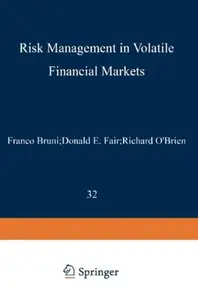
Free Download Risk Management in Volatile Financial Markets By Markus Lusser (auth.), Franco Bruni, Donald E. Fair, Richard O'Brien (eds.)
1996 | 371 Pages | ISBN: 1461285429 | PDF | 14 MB
intense competition on banks and other financial institutions, as a period of oligopoly ends: more rather than less innovation is needed to help share undi versifiable risks, with more attention to correlations between different risks. Charles Goodhart of the London School of Economics (LSE), while ques tioning the idea that volatility has increased, concludes that structural changes have made regulation more problematic and calls for improved information availability on derivatives transactions. In a thirteen country case study of the bond market turbulence of 1994, Bo rio and McCauley of the BIS pin the primary causes of the market decline on the market's own dynamics rather than on variations in market participants' apprehensions about economic fundamentals. Colm Kearney of the Univer sity of Western Sydney, after a six country study of volatility in economic and financial variables, concludes that more international collaboration in man aging financial volatility (other than in foreign exchange markets) is needed in Europe. Finally, Stokman and Vlaar of the Dutch central bank investigate the empirical evidence for the interaction between volatility and international transactions in real and financial assets for the Netherlands, concluding that such influence depends on the chosen volatility measure. The authors sug gest that there are no strong arguments for international restrictions to reduce volatility. INSTITUTIONAL ISSUES AND PRACTICES The six papers in Part C focus on what market participants are doing to manage risk.
Code:
Bitte
Anmelden
oder
Registrieren
um Code Inhalt zu sehen!